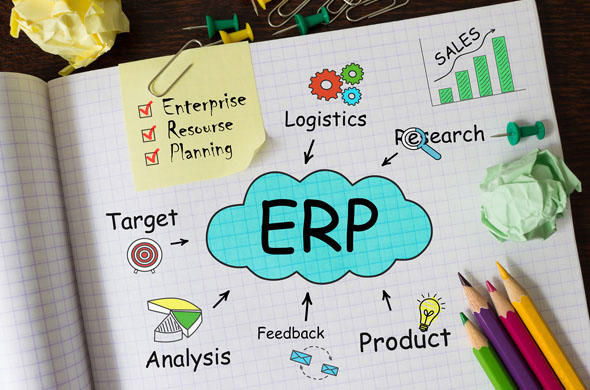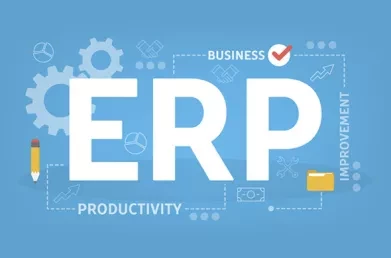Eight symptoms of suboptimal ERP
There are many tell-tale signs that an ERP system is not performing the way it should be. Assess your situation against this analysis of eight common symptoms that your ERP system may be suboptimal.
1. Out with the old, in with the old
You’ve implemented ERP relatively recently, but seen few improvements as the new system is effectively little more than a modernised version of the old system.
Many companies take the opportunity presented when implementing a new ERP system to review how their business processes work. Where possible, processes are improved by taking advantage of functionality provided by the new system, eliminating inefficiencies and improving reporting. Regrettably a great many companies don’t take this approach and end up with a new system that does little more than the old system did. Many of the old failings remain and a chance to make improvements has been squandered.
2. Brain drain
There seems to be a lack of deep understanding as to how the system works, especially for complex cross-functional processes.
All businesses need people who understand the finer points of how the ERP system is configured. This role is initially filled by some of the people on the implementation project team (who may be called key users, super users or system champions). Over time a proportion of the people who were involved in implementing the system will move on (either leaving the business or moving to different roles). Replacing these key users is often neglected, leaving a gap in terms of system knowledge, while training of new users often falls to people with limited knowledge in their own right. It is not uncommon to see departments operating with very limited local ERP knowledge within 12 months of a system going live. This problem is compounded where training materials and process documentation are poor or absent.
3. Inadequate support
System support isn’t working well, and users are frustrated with the support provided by the software vendor and the IT department.
Gaps often exist between users’ expectations of system support and the support service the vendor is actually providing. System support, in its strictest sense, means dealing with issues caused by software not behaving as expected. However in the early stages of using a new system users often simply need advice on using the system. Many vendors will only handle this type of query if you have subscribed to an enhanced or extended support agreement; otherwise, from the support desk’s perspective, such queries are nothing to do with support.
The “brain drain” issue described previously can exacerbate support issues, as users will inevitably direct queries to the IT department in the absence of local key users. Unfortunately, while the IT department are happy to handle technical queries, they often know little about software functionality or the detail of business processes.
4. A question of data
Data integrity is a constant challenge; problems with the system and with reports are often traced back to data issues.
ERP systems are hugely reliant on data quality, but data management processes are far too often neglected during ERP implementations. In some cases data migration is poorly executed: existing data issues persist in the new system and new issues are created. The integrated nature of ERP systems means that data errors tend to propagate through the system, so it’s vital that adequate attention is paid to how data is managed. Putting this concept into practice can be difficult for many organisations, and changes to data management processes, roles and responsibilities are usually required.

5. Fighting an uphill battle with reports
Reporting is adequate at best, and certainly not at the level it should be.
While various reporting tools are usually implemented as part of an ERP implementation, they’re often not used to best effect once the system goes live as users lack the necessary skills.
6. Ignoring upgrade opportunities
Software upgrades are available, but haven’t been considered.
Most ERP systems will have updated newer versions released periodically. New releases provide new functionality or enhancements to existing functionality, as well as bug fixes to known software issues. If software updates have been released since your ERP system went live then it is probable that newer versions of the software have additional functionality that you could use. Your annual software maintenance fee ensures that all of this new software is available to you. Many companies wait years after their initial implementation before even assessing what benefits an upgrade might provide, all the time paying handsomely for software maintenance and the privilege of access to the latest version of the software but getting little in return.
7. Technical woes
Ongoing technical issues are contributing greatly to a feeling of dissatisfaction with the system.
Even the most suitable and well-implemented ERP system will struggle for acceptance if technical issues linger unresolved for long periods. Users won’t differentiate between different types of downtime – to them the system is simply out of action for a period – while continuous performance issues will be disruptive and cast a negative shadow over any ERP system, even though it may be working well otherwise. Dealing with technical problems, whether infrastructural in nature (excessive system downtime, unreliable networks or poor performance), or software-related (regular software bugs, unreliable interfaces with other systems), are vital to user satisfaction.
8. Spreadsheet relapse
There is still widespread use of spreadsheets and other informal processes to manage the business – even in areas where the ERP system should be used.
The proliferation of spreadsheets is one of the most obvious symptoms that all is not well with the systems used by any enterprise. It’s the obvious route for users to take when the transactional and reporting systems simply don’t meet the users’ needs. Implementing a new ERP system is an opportunity to weed out the use of spreadsheets to support business processes, so their continued prevalence despite investment in ERP should be a major cause for concern.
If your ERP is underperforming then you have probably identified with many of the symptoms described above. The question is: what should you do about it? Download the Lumenia Executive Briefing ERP Optimisation: Are you wasting your Investment in ERP? and continue reading about the four lines of attack that should form the basis of your ERP Optimisation approach.
This blog and Briefing was written by John Donagher, Principal Consultant at Lumenia. If you would like further information on sub-optimal ERP or any other aspect of ERP Systems please send an e-mail to John Donagher.


